Greek Tacos: When Mediterranean Flavors Meet Mexican Street Food
Table of Contents
- What Exactly Is a Greek Taco?
- Spice Breakdown: Mediterranean Meets Mexico
- 5 Tips to Nail Your Greek Taco Game
- DIY Greek Taco Bar: How to Set It Up
- A Global Fusion Tale: How These Two Cuisines Collide
- Conclusion: A Flavor Combo Worth Celebrating
What Exactly Is a Greek Taco?
Hold on—Greek tacos? That sounds like a culinary mashup pulled straight from a foodie's dream journal. But yes, it’s real, and it’s delicious!
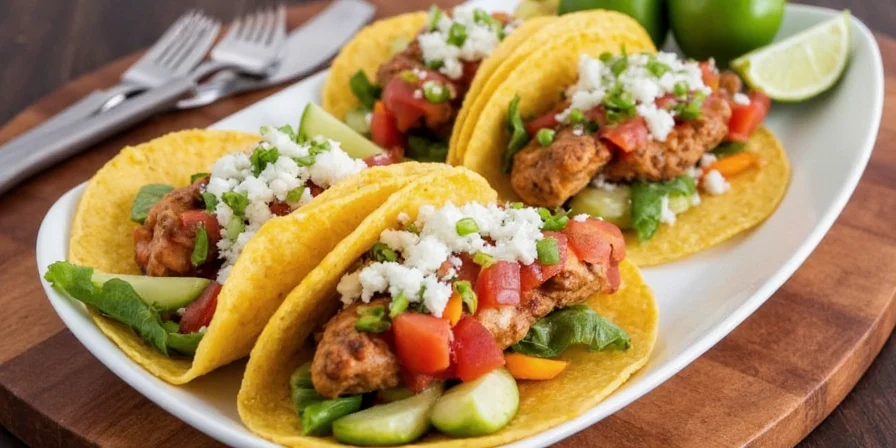
A modern take on a Greek taco with lamb, tzatziki, and all the fixings.
The concept is simple: take the essence of Greek street food—think souvlaki or gyro meat—and tuck it into a warm tortilla with Mediterranean-inspired toppings. The result? A handheld flavor bomb that makes your taste buds dance between continents.
Spice Breakdown: Mediterranean Meets Mexico
Let’s talk spices—the soul of any great taco (Greek or otherwise). Here’s a side-by-side comparison of classic ingredients used in each tradition:
| Mediterranean Spice Powerhouse | Mexican Classic Kick |
|---|---|
| Oregano | Cumin |
| Dill | Paprika |
| Sumac | Chili powder |
| Garlic powder | Ancho chili |
| Lemon zest | Coriander (cilantro in leaf form) |
When you blend these together, something magical happens. For instance, oregano pairs beautifully with cumin—it’s earthy, aromatic, and just a little spicy. Sumac adds a citrusy punch that can brighten up grilled meats or fresh salsas. And when garlic hits the grill alongside lamb or chicken, it sings in harmony with every bite.
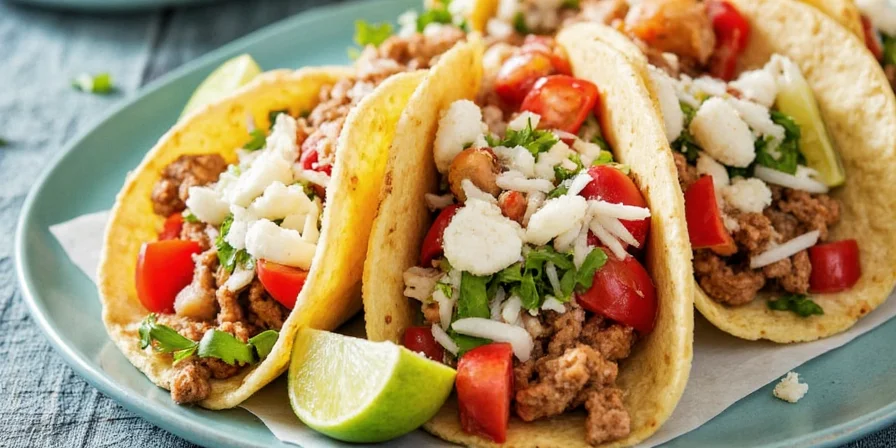
A colorful array of Greek and Mexican spices ready to collide in your kitchen.
5 Tips to Nail Your Greek Taco Game
- Don’t skip the marinade. Whether you're using chicken, lamb, or even falafel for a vegan twist, marinating overnight will give your protein that deep, rich flavor foundation.
- Use fresh tortillas. If you can find them, corn tortillas are ideal—they’re sturdy enough to hold heavy fillings but still allow those Greek flavors to shine through.
- Tzatziki is your BFF. Make sure it’s thick and tangy—not watery. Add a squeeze of lemon at the end for a final zing.
- Top smartly. Pick 2–3 key toppings to avoid overpowering your taco. Try pickled onions, cucumber slices, or a drizzle of harissa-laced tahini.
- Serve immediately. Nothing worse than a soggy taco. Warm everything up before assembly, and let your guests build their own for optimal crunch.
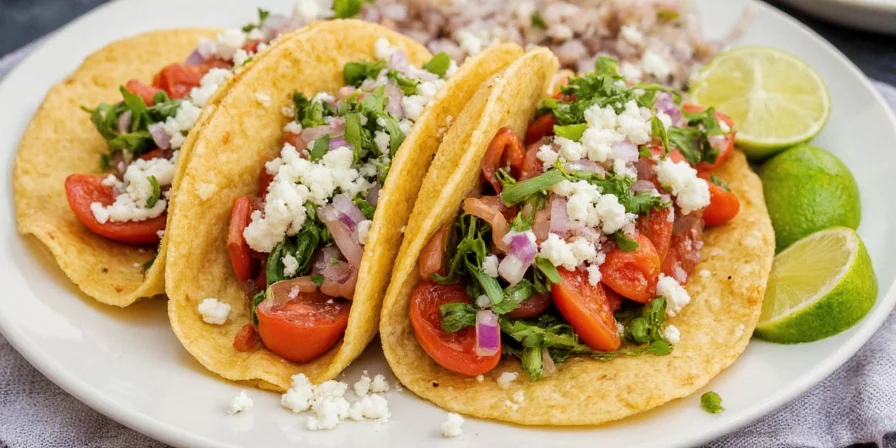
A vibrant taco bar loaded with Greek-Mexican hybrid toppings and sides.
DIY Greek Taco Bar: How to Set It Up
If you're hosting friends or just want to experiment, setting up a DIY Greek taco bar is the way to go. Here’s what to include:
- Proteins: Grilled chicken skewers, lamb shawarma-style, falafel balls, or even roasted eggplant strips.
- Tortillas: Corn, flour, or even pita wraps if you're feeling adventurous.
- Sauces: Tzatziki, skordalia (Greek garlic dip), hummus, guacamole, and a spicy yogurt-chipotle blend.
- Toppings: Chopped cucumbers, feta crumbles, red onions, romaine lettuce, sun-dried tomatoes, olives, and pickled jalapeños.
- Sides: Roasted chickpeas with paprika, Greek rice pilaf with cinnamon, and a simple tomato-cucumber salad with olive oil and oregano.
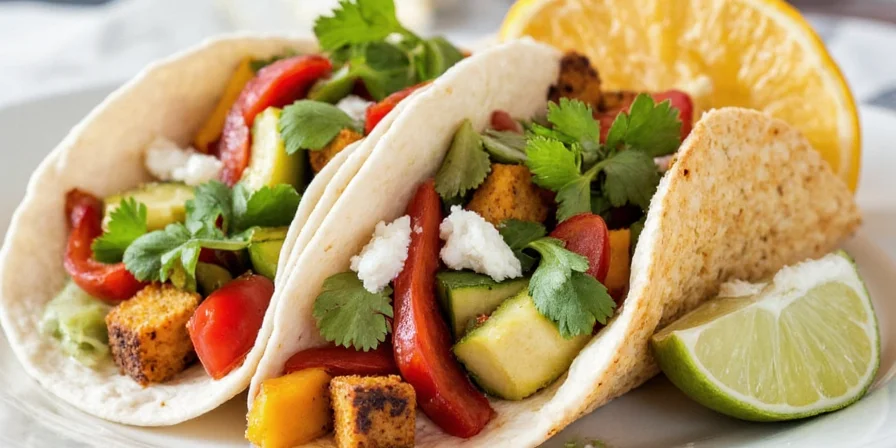
A beautiful platter of freshly made Greek tacos ready for the table.
A Global Fusion Tale: How These Two Cuisines Collide
Fusion food gets a bad rap sometimes—like it’s just a gimmick or a trendy phase. But Greek tacos tell a deeper story of global spice migration and cultural cross-pollination.
Think about it: Greece and Mexico both have strong traditions of street food, open-fire grilling, and bold seasoning. Both cuisines use similar techniques—grilling, marinating, and slow-roasting—to bring out intense flavor profiles. And they both love carbs: Greeks wrap things in phyllo or stuff pitas; Mexicans roll or fold theirs into tortillas.
The real magic lies in how these two cultures treat spices. Mediterranean cuisine uses herbs to enhance freshness and balance fatty meats. Mexican cuisine leans more into smoked, toasted, and dried spices to build depth. Together, they create something entirely new—yet somehow familiar.
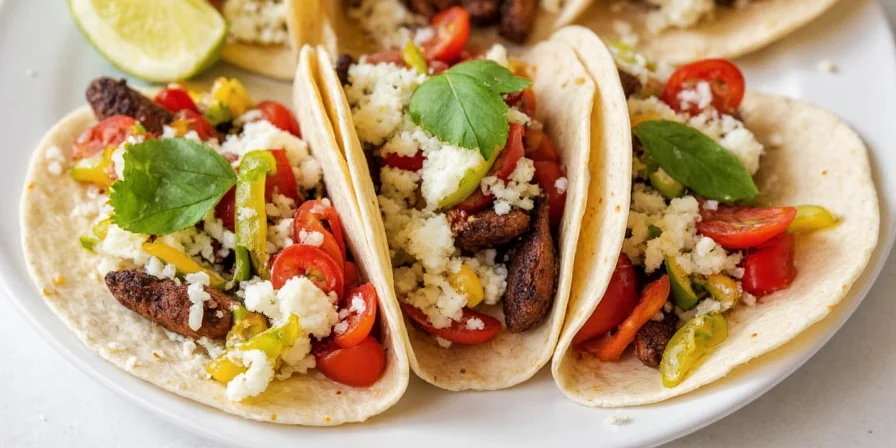
A close-up of a taco being assembled with gyro meat, tzatziki, and fresh veggies.
Conclusion: A Flavor Combo Worth Celebrating
Greek tacos aren’t just a novelty—they’re proof that good food knows no borders. By blending Mediterranean warmth with Mexican vibrancy, we get something truly exciting: a dish that feels both nostalgic and new.
Whether you're cooking for a crowd or experimenting solo in your kitchen, this hybrid dish invites you to play with spices, textures, and traditions. So fire up the grill, grab your favorite tortillas, and let your inner food scientist loose!
And remember: the best taco isn't the most authentic one—it's the one that tastes best to YOU.
Bon appétit—or should I say, buen provecho!

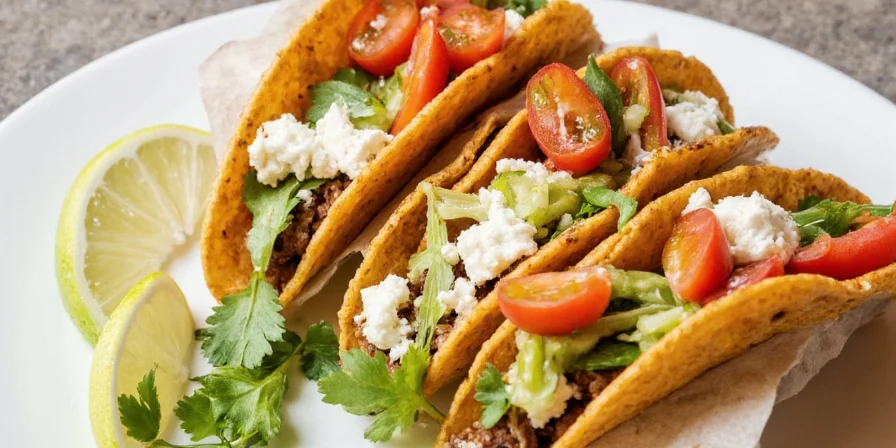









 浙公网安备
33010002000092号
浙公网安备
33010002000092号 浙B2-20120091-4
浙B2-20120091-4